Reading Pa Wild Cat on the Streets
This fluffy, playful cat with a very expressive gaze is just begging to exist cuddled! Simply it absolutely can't stand humans. And it has its reasons.
1. Loves solitude

Manul kittens at the Moscow Zoo'southward Center for the Reproduction of the Rare Animal Species
Press Service of the Moscow Zoo
If cats had social media accounts, manuls would probably depict themselves equally "difficult to discover, piece of cake to lose and impossible to forget". The manul (or Pallas's True cat - afterwards its discoverer, 18th century Prussian zoologist Peter Simon Pallas) is one of the biggest introverts among animals. They are indeed hard to spot: they predominantly live on uninhabited steppes of the Zabaikalye and parts of Mongolia bordering that region. They are also spotted in some regions of Cardinal Asia.
These cats are proudly alone, each living on its ain territory (which measures around four sq. kilometers) and encountering one another only during the mating flavor in leap. The manul is too an endangered species and included in the Ruby Data Book of Russia and other countries' endangered lists. Although experts believe they appeared some 5 million years ago, very little is known about them. Exact numbers in the wild are tough to estimate, due to their secretive nature. Currently, there are an estimated 3,000 known to exist living in Russian federation (Mongolia is believed to take more, according to scientists).
2. Very compact
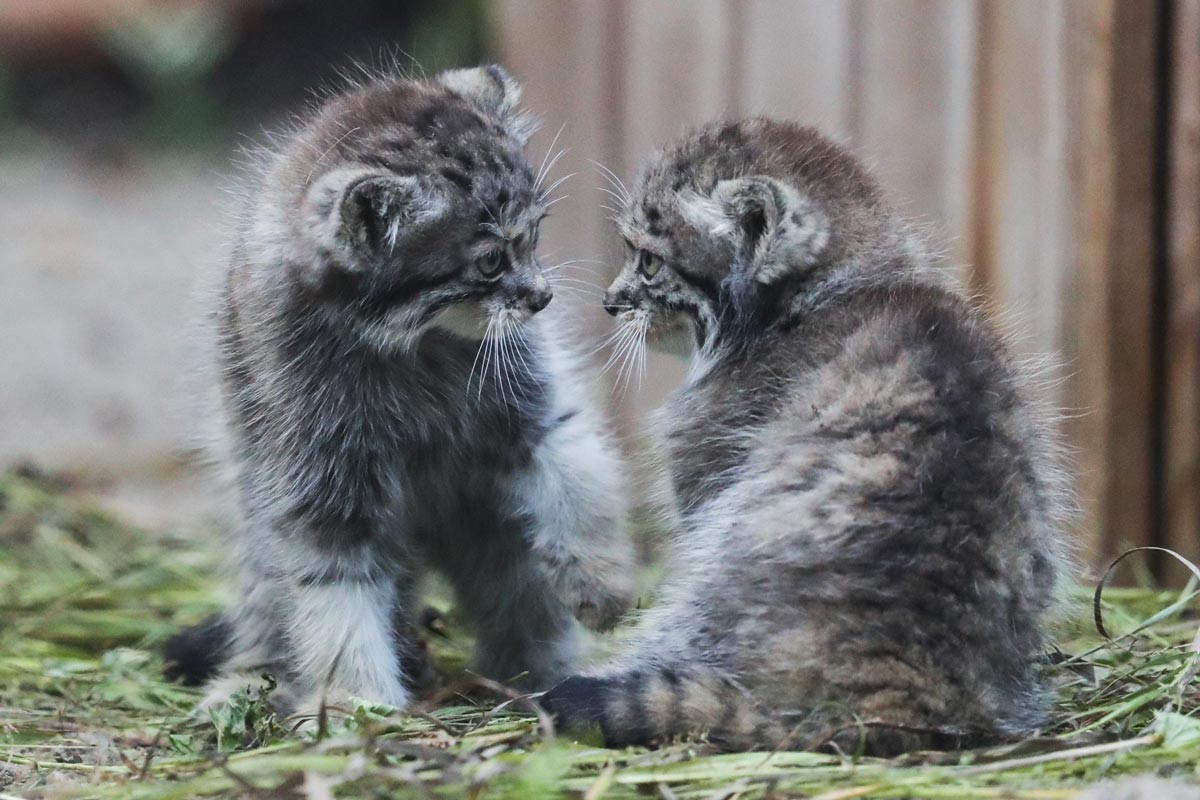
Manul kittens at the Novosibirsk Zoo
Kirill Kukhmar/TASS
A regular house cat weighs more than the wild manul, whose kittens are and then tiny, they measure less than 100 grams in weight; meanwhile, an adult manul (8 months or older) weighs anywhere between 3-5 kilograms. They're no bigger than ordinary cats, either, usually nearly 60 cm in length, followed by a xxx cm tail. By the fashion, the true cat's Latin name is 'Otocolobus manul' - which means "ugly ear" - although we don't see anything incorrect in that department!
three. Fluffiest cat in the world

Preparing for winter
Getty Images
Despite their diminutive size, manuls yet seem rather large, which is down to their dumbo fluffy fur glaze - the densest amidst all cats. Every square centimeter of skin contains 9,000 hairs up to seven cm long. This fluffiness allows them to survive in the harshest conditions.
iv. Weighs twice equally much in the wintertime

Manul and her kitten at the Novosibirsk Zoo
Kirill Kukhmar/TASS
Manuls' survival depends on them gaining weight during the fall. Experts refer to this every bit "fattening upwards". It'southward all down to the inhospitable winters in the steppes they inhabit. As if -l°C temperatures weren't plenty, at that place are also fierce winds. And manuls never hibernate - they hunt all year round. So, the only fashion for them to survive is to shop enough fat. A manul can counterbalance up to vi-vii kg in wintertime and constantly goes on food runs.
5. Good hunter
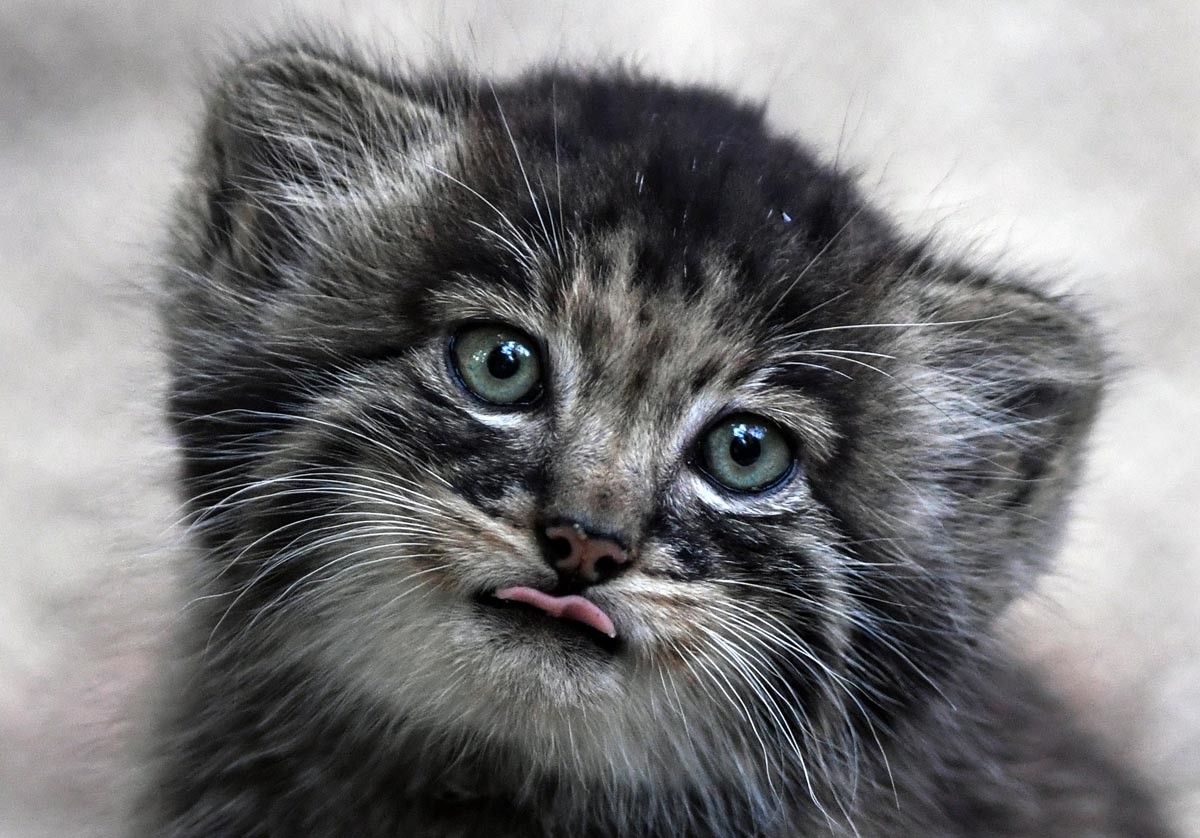
Manul kitten at the Novosibirsk Zoo
Kirill Kukhmar
Due to their increased fluffiness, manuls are rather boring and sluggish, plus they have short paws that likewise tend to sink in the snowfall. 'Graceful' is the last adjective you'd use to describe Pallas' Cats. Yet, they make corking hunters. Their cover-up allows them to blend into the surrounding landscape and kill their prey in 1 fell swoop. Hither'southward what it looks similar.
six. Pupils similar a lion's
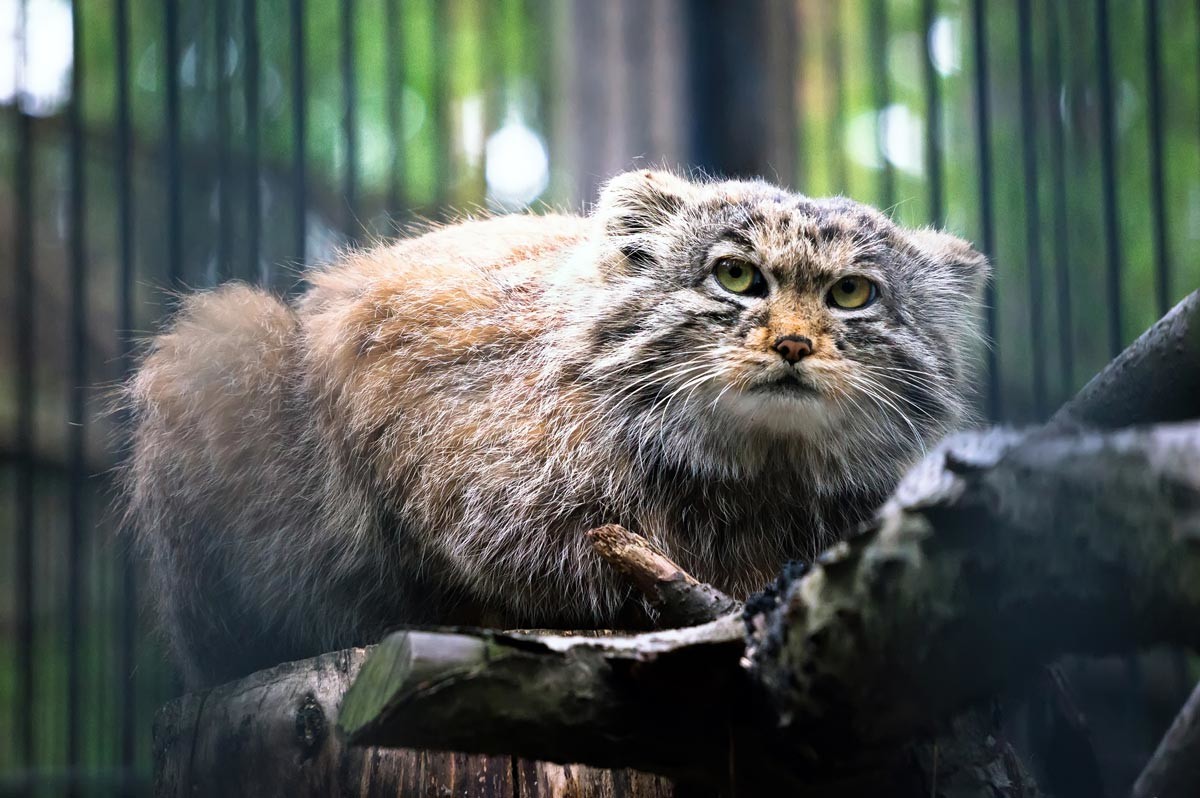
Larger cats often take like pupils
Getty Images
Although manuls aren't imposing in size, they have the near expressive gaze among their small-scale cat kin - rather than vertical pupils, theirs are round, only like those of big true cat predators, such as lions and tigers. Information technology uses them to phase sudden ambushes on small rodents and partridges. By the way, if whatever of its victims leave behind a comfortable dugout, the manul may choose to move in. It'due south more than capable of making i itself - simply why bother?
seven. Lives wherever is most convenient

Manul kitten
Alexander Kryazev/Sputnik
Aside from occupying badger's and other rodents' holes, manuls frequently take up residence in rock cracks. Just they may likewise choose entirely unpredictable places. Staff at the 'Daursky' national park in Zabaikalye once discovered two females that settled in old abandoned combines standing in a field overgrown with weeds. In another incident, in the summer of 2021, residents of a village in Buryatia found iii newborn kittens in a haystack by an old house. No one actually knew what the mother's logic was in selecting the spot.
viii. Doesn't like people
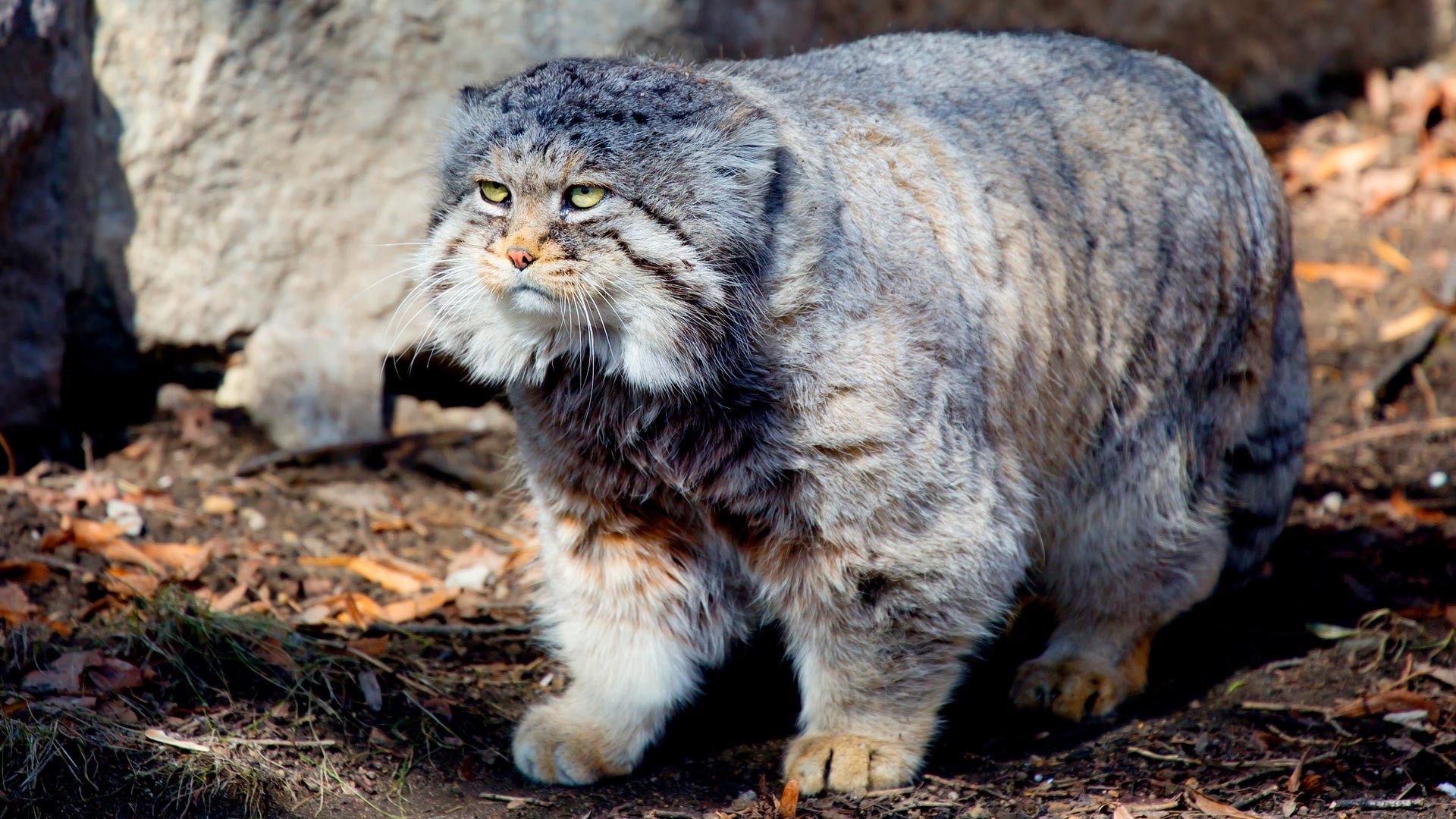
Better not to pet this cat
Getty Images
Manuls live such a alone existence that they don't really even take whatever natural enemies… except humans, that is. They suffer not merely from poaching, but the expansion of human civilisation and activity itself. They might go poisoned past a mouse that visited a crop field and picked and carried pesticide in its system. For this and other reasons, the manul is wary of humans, and seldom shows its face, even preferring to hide within its house in zoo enclosures.
nine. Will never become a firm pet
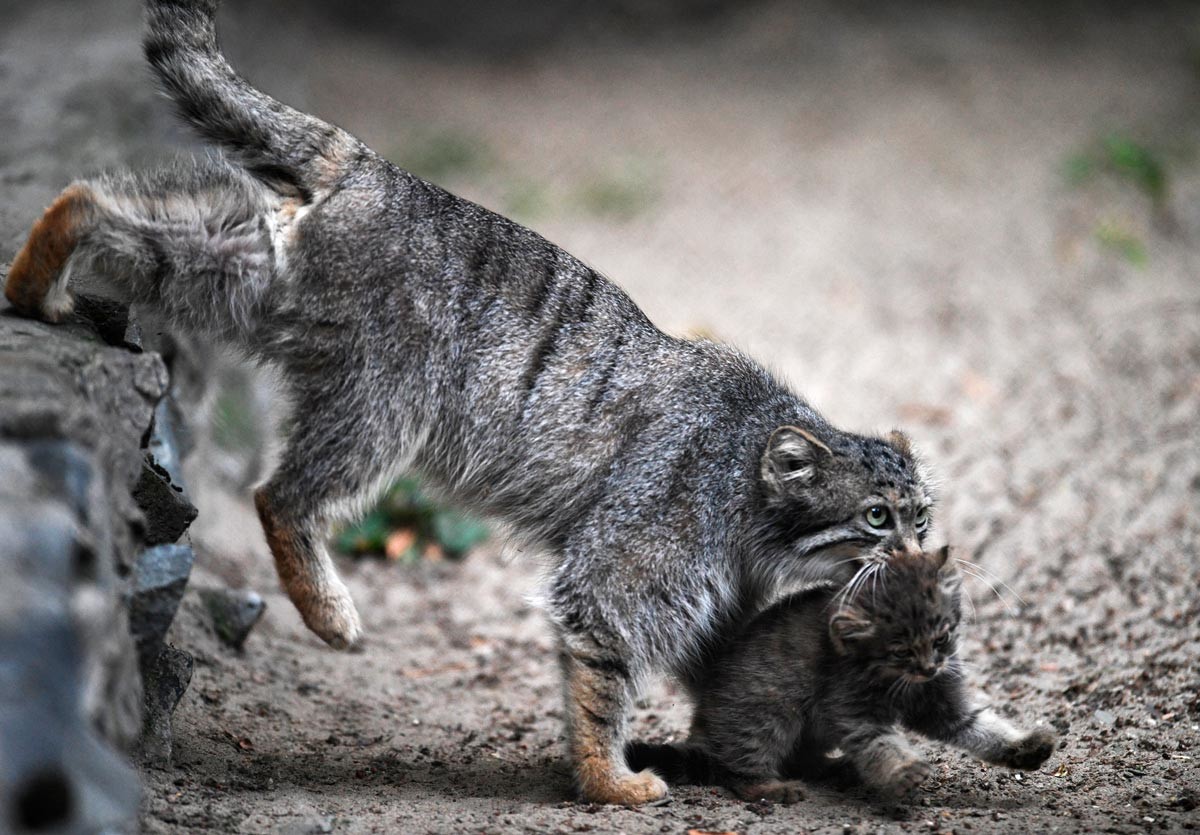
Manul and her kitten at the Novosibirsk Zoo
Alexander Kryazev/Sputnik
Domesticating a manul is impossible, although there have been rare cases of them beingness raised past people. In one such case, while some Buryat villagers were waiting for zoologists to arrive, they feed three little manuls cat food and even bathed them: it turned out they weren't all that opposed to a wash, although they hissed fiercely and showed their displeasure in other manul ways. Past the mode, today, these kittens are already in the prophylactic hands of creature experts at the Moscow Zoo'southward rare creature nursery.
"Manuls absolutely tin can't stand when they're being handled," says Irina Aleksiecheva, 1 of the employees. There were cases at the Daursky reserve when abandoned kittens would be found and taken care of. However, as presently as the kittens were old enough to fend for themselves, they would easily get out their human parents without looking back.
10. Manuls in zoos are relatives

Better non to pet this cat
Getty Images
There are around 150 manuls in zoos worldwide and almost all of them are related to each other. A very sizable contribution to the study of the behavior of these wild cats was fabricated by zoologists at the Moscow and Novosibirsk zoos. The first members of the species appeared in the uppercase in 1949 - today, they are the mascots of the zoo and its center for the conservation of rare species. Manuls born in captivity in Novosibirsk today too alive in zoos in Zurich, Poznan and Tallinn.
If using any of Russia Beyond'southward content, partly or in full, always provide an agile hyperlink to the original fabric.
Get the week's all-time stories direct to your inbox
Source: https://www.rbth.com/lifestyle/334462-manul-grumpy-cats-russia